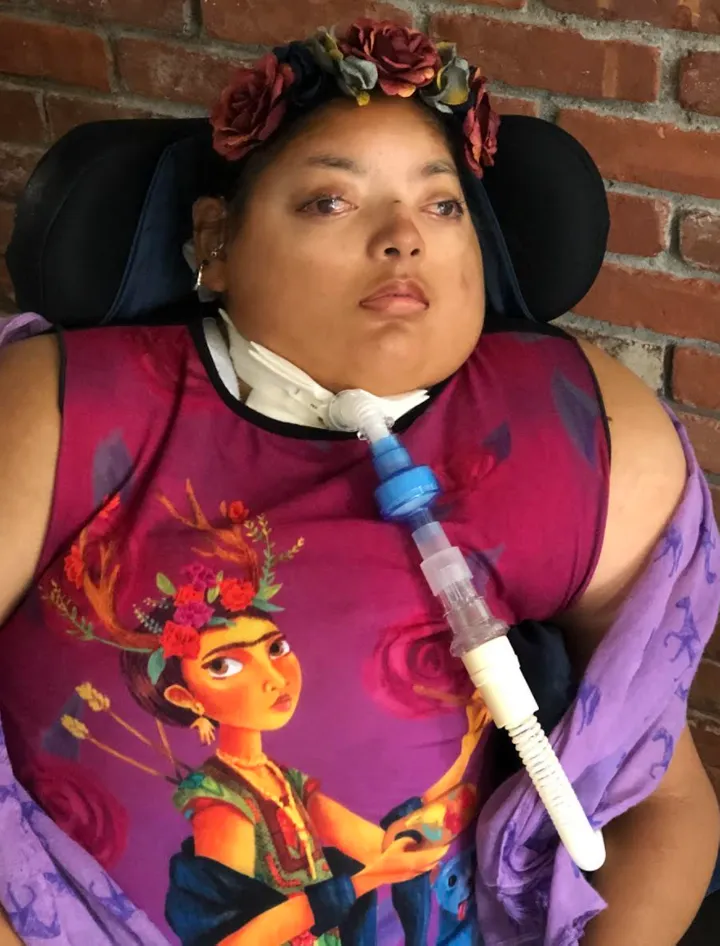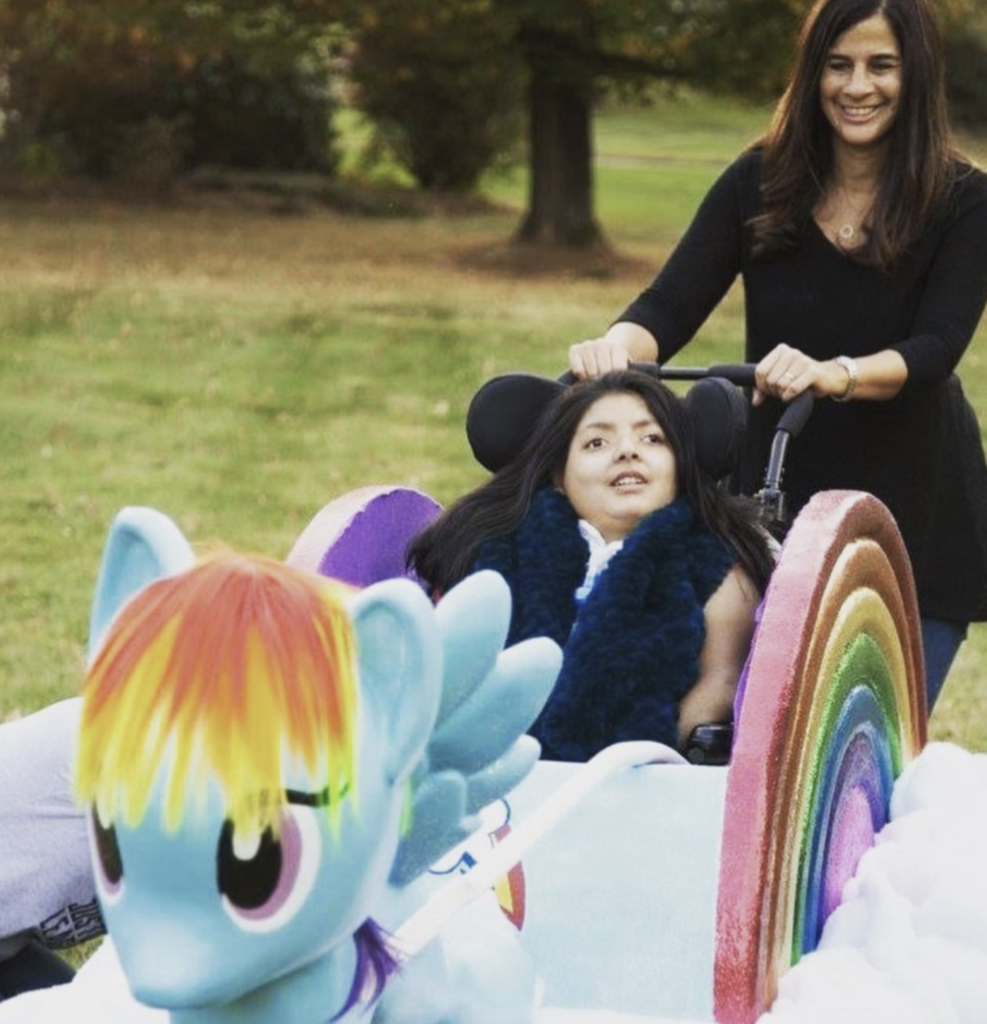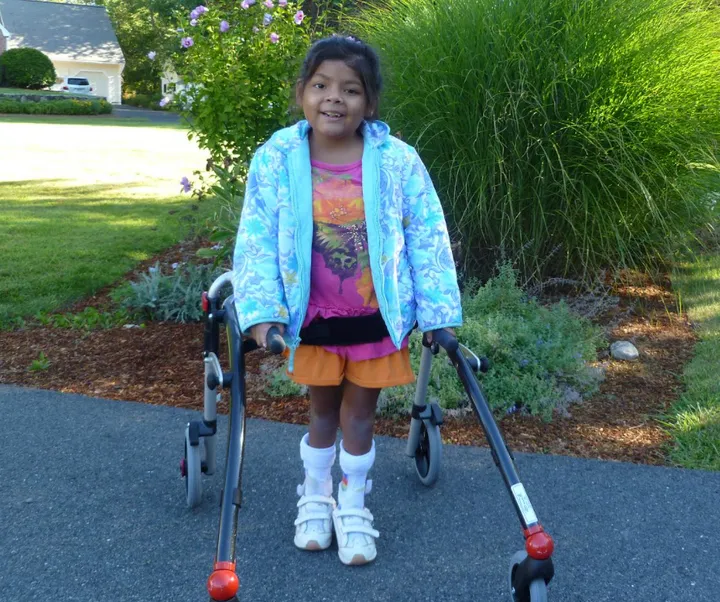Jessica Fein is the proud mother of two sons and one daughter. Her adventure in parenthood, however, looks quite different than most. This is because her daughter Dalia has a rare, degenerative disease called myoclonic epilepsy with ragged red fibers, also known as MERRF.

Dalia’s Diagnosis
When Jessica gave birth to her only daughter Dalia, everything at first seemed perfectly normal. As Dalia grew and reached the toddler stage, however, Jessica’s mom’s instincts kept telling her that something wasn’t right. She noticed that, as Dalia progressed through the toddler stage, her walking didn’t. Dalia never quite seemed sure-footed. For three years, she and her partner searched for a diagnosis. (1)
“We’d already been refused early intervention three times. “She’s on the lower end of average,” doctors told us. “Give her time and she’ll surely catch up,” they said. “She’ll be fine,” her pediatrician assured me, each of the 752 times I called. It must have been the 753rd time when he finally referred us to an audiologist,” Jessica wrote. “That referral led us to the geneticist, who ended up delivering the information that changed our lives.”
The geneticist informed them that Dalia’s blood work revealed a positive result for a genetic mutation associated with MERRF syndrome. He told them that it is an extremely rare mitochondrial disease. Extremely rare is nearly an understatement: The probability of having it is 2 in 1,000,000.

Read: Grieving Parents Preparing for Son’s Funeral Find Harrowing Note He Left Them in the Living Room
What Is MERRF Syndrome?
MERRF is a multisystem disorder characterized by a malfunction of the mitochondria in our cells. It is often followed by generalized epilepsy, ataxia, weakness, and dementia. It is a degenerative disease that has no cure.
“Mitochondria are the powerhouse of the body’s cells, responsible for converting protein into energy,” the geneticist explained to Jessica. “Every organ relies on mitochondria to function properly, so if your mitochondria aren’t working like they’re supposed to, your body can’t either.”
Symptoms usually first appear in early childhood or adolescence. The way it presents itself can be highly varied between individuals. The features of this illness include (2):
- Myoclonus (brief, sudden, twitching muscle spasms) – the most characteristic symptom
- Epileptic seizures
- Ataxia (impaired coordination)
- Ragged-red fibers (a characteristic microscopic abnormality observed in muscle biopsy of patients with MERRF and other mitochondrial disorders)
- hearing loss
- lactic acidosis (elevated lactic acid level in the blood)
- short stature
- exercise intolerance
- Dementia
- cardiac defects
- eye abnormalities
- speech impairment.
You inherit the disease from your mother because we inherit mitochondrial DNA from egg cells, not sperm ones. All of this mothers’ children will inherit this gene, though not all will show symptoms. From there, this mother’s daughter’s children will also inherit it but not her son’s children, as men cannot pass it along. There is currently no cure, however, there are treatment options to manage symptoms.
There are no medications that actually treat the illness. Rather, they help lessen the symptoms. Most often the list of medications includes antiseizure medications, naturally to help reduce the number and severity of seizures. It will also include levetiracetam for myoclonus and standard medication to treat cardiac symptoms. Some individuals benefit from certain supplements, as well. Finally, physiotherapy and regular aerobic exercise are beneficial.
Though the disease is rare, specialists do exist. It is important for families to seek the help of a specialist. This way, their child will receive the care that they need.
Working To Improve Awareness

At the age of nine, Dalia lost her ability to speak, walk, eat, and even breathe on her own. Now 16 years old, her parents have finally found and enrolled her in a clinical trial that may help. Jessica uses her Instagram to spread awareness about MERRF.
“Awareness and action aren’t things that can be put on the back burner until more common illnesses are cured. We must do what we can today ― and every day moving forward,” she wrote. “My daughter has a disease that you’ve now heard of. And that’s a start.”
You can follow Jessica on her Instagram, where she often provides links to donate and share so you can help spread awareness, too.
Keep Reading: Sweet 10-Year-Old Girl with Rare Facial Tumor Ignores Those Who Laugh And Inspires Us All
Sources
- “My Daughter’s Rare Disease Was A Mystery For Years. Here’s How We Finally Got A Diagnosis.” Huffpost. Jessica Fein. February 28, 2022.
- “Myoclonic epilepsy with ragged red fibers.” Rare Disease

